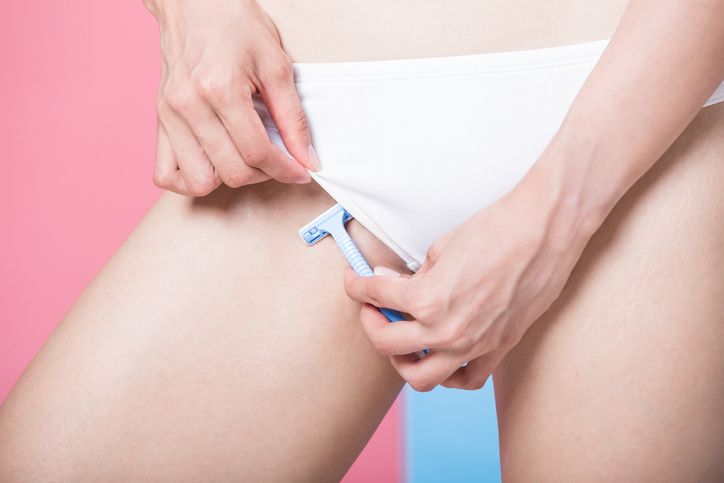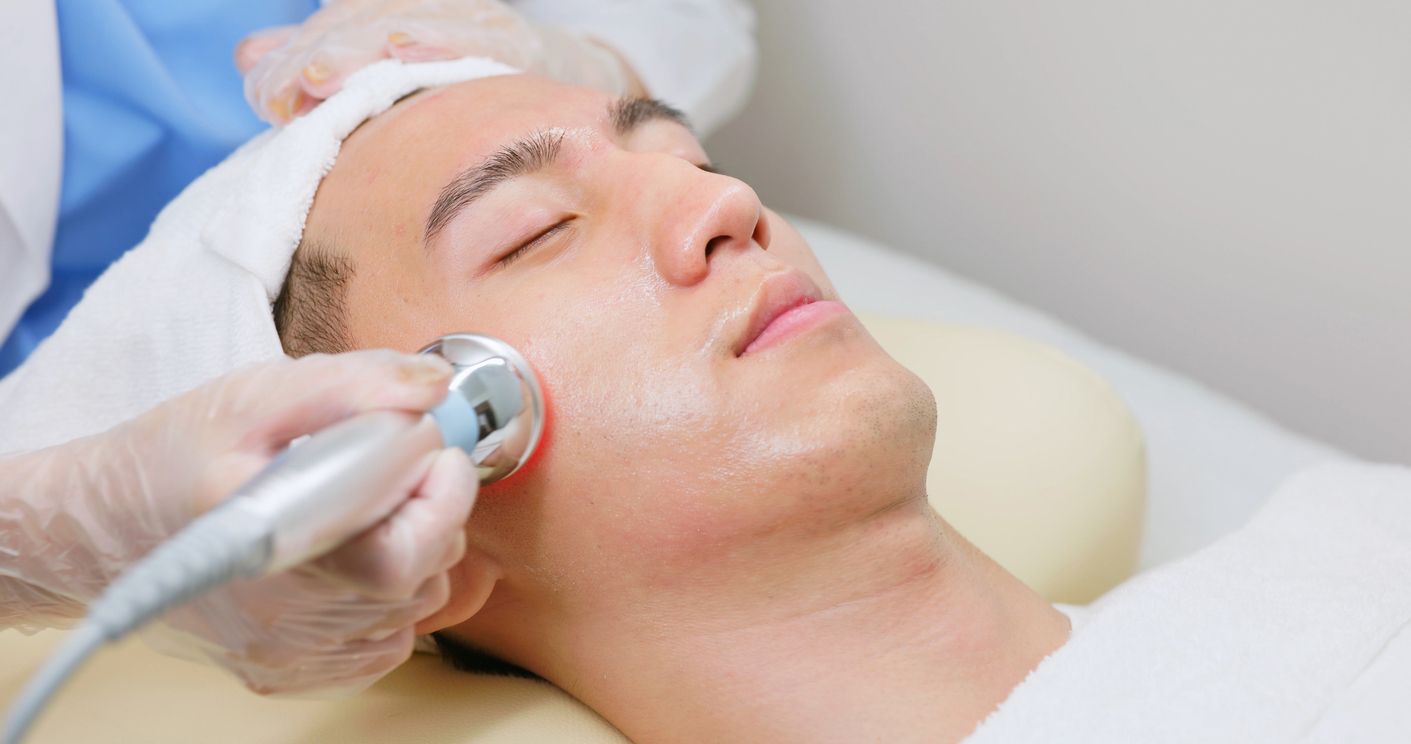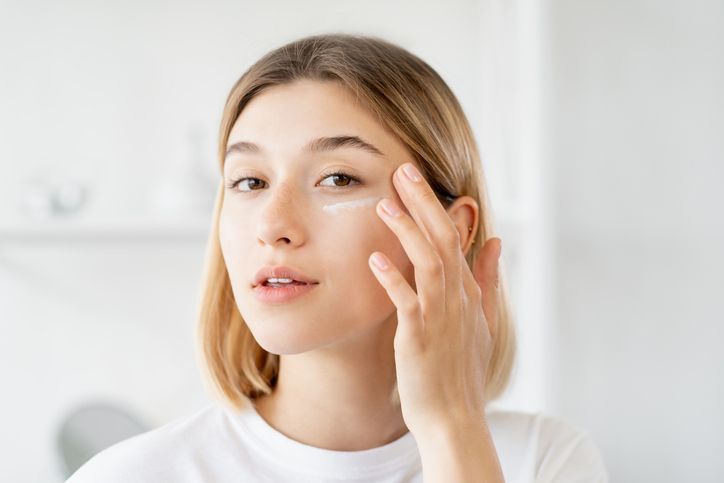- Home
- Trend
- Weight Loss Strategies
- Acne Tips
- Hair Health Information
- Blemish Removal Tips
- Acne Scar Removal Tips
- Muscle Building Techniques
- Intimate Care Tips
- Postpartum Intimate Care
- Eye Bags Wiki
- Tips for Face Slimming
- Secret of Permanent Hair Removal
- Breast Enlargement Tips
- Cure to Snoring
- Marionette Lines
- Skin-Tightening Secrets
A receding hairline is one of the most noticeable signs of hair loss, often causing frustration and concern for both men and women. Characterized by the gradual loss of hair along the front of the scalp, a receding hairline refers to a condition influenced by hereditary factors, hormonal changes, lifestyle habits, and underlying health issues. Despite being common, this condition is treatable, and advancements in hair loss treatments now offer effective solutions to restore hair growth.
Why Hairlines Recede?

Hairline recession can occur due to various factors, often varying between men and women. Some causes, such as genetics, are inevitable, while others stem from lifestyle or environmental influences. By understanding these triggers, it’s easier to take steps to protect and restore hair health.
Causes of Hairline Recession in Men
For men, a receding hairline is most commonly linked to androgenetic alopecia, or male pattern baldness. This hereditary condition disrupts the hair growth cycle, leading to thinner hair strands and, eventually, hair loss. It typically starts at the temples, forming an "M"-shaped pattern, and can progress to the crown, leaving only a fringe of hair at the back and sides of the head.
A key player in male androgenic alopecia is the hormone dihydrotestosterone (DHT). DHT binds to hair follicles, shrinking them over time and shortening their lifespan. This process causes hair to grow back finer and slower until the follicles eventually stop producing new hair.
Causes of Hairline Recession in Women
For women, androgenetic alopecia, or female pattern hair loss, is the primary reason behind hair thinning and hairline recession. Unlike men, this condition doesn’t typically result in an “M”-shaped hairline. Instead, women experience diffuse thinning across the crown, making the part line appear wider.
Hormonal changes play a significant role in hair loss among women. Events like pregnancy, childbirth, and menopause often disrupt the balance of hormones such as estrogen and progesterone, which protect hair follicles from shrinking. After childbirth, for instance, many women experience excessive shedding—a condition known as postpartum hair loss—which can impact the hairline.
Tight hairstyles, such as ponytails, braids, or buns, are another common culprit. Over time, these styles place excessive tension on the scalp, damaging hair follicles and causing traction alopecia. Similarly, frequent use of heat styling tools and chemical treatments can weaken the hair shaft, contributing to thinning hair and receding hairlines.
Finally, autoimmune conditions such as frontal fibrosing alopecia or alopecia areata may also target the hairline, causing patchy hair loss and scalp inflammation.
Shared Causes Across Genders
While some causes of hairline recession are gender-specific, others affect both men and women. Stress, for instance, universally impacts the hair growth cycle. Chronic stress hampers blood flow to the scalp, reducing the supply of oxygen and nutrients essential for healthy hair growth, causing telogen effluvium.
Similarly, poor lifestyle habits, such as inadequate nutrition or exposure to harsh chemicals in hair care products, can weaken hair density and accelerate hairline recession. Environmental factors like pollution and UV exposure can also damage hair health and scalp integrity, making it harder for hair to grow back effectively.
The Receding Hairline Stages
A receding hairline is generally the form of hair loss that is particularly linked to male pattern baldness (androgenetic alopecia) in men, but it can also occur in women, though in a different pattern. The stages of hairline recession are often similar in both men and women, but the progression and causes can vary significantly between genders due to hormonal influences, genetics, and other factors.
Stages of Hairline Recession in Men
Slight Hair Loss
In the early stage, men may notice mild thinning along the temples or crown. This stage is often subtle, with hair appearing finer or weaker. Many men dismiss this as normal hair shedding, not realizing it may signal the onset of male androgenic alopecia.
Moderate Recession
As the condition progresses, the hairline begins to recede visibly, forming an "M"-shaped pattern typical of male pattern baldness. Bald patches may appear at the temples, while the hair at the crown starts thinning. This stage highlights a significant weakening of hair follicles, requiring targeted treatments to promote hair growth and prevent further loss.
Advanced Hair Loss
In advanced stages, the hairline recedes significantly, exposing a larger portion of the scalp. Bald spots on the crown expand, and the hairline often merges with thinning areas, leaving only a fringe of hair around the sides and back of the head. At this point, hair follicles in the affected areas may become dormant or permanently inactive, making regrowth challenging without interventions like hair transplants or medical treatments.
Stages of Hairline Recession in Women
Slight Hair Loss
For women, the early stage of hairline recession involves mild thinning hair, particularly along the part line or near the temples. Unlike men, women don’t typically experience bald spots but rather diffuse thinning across the top of the scalp. This stage may coincide with hormonal shifts, such as postpartum changes or menopause, triggering female pattern baldness.
Moderate Recession
As hair thinning becomes more pronounced, the part line widens, and the hair near the temples may start to recede subtly. Hair strands appear finer, and the scalp becomes more visible under light. This stage often results from androgenetic alopecia or stress-induced hair loss, both of which weaken hair density and reduce hair growth.
Advanced Hair Loss
In the later stages, women may experience noticeable thinning at the crown, and the hairline may recede further, resembling a high forehead. While complete bald spots are rare, the overall volume of hair diminishes significantly, making the scalp more exposed. Advanced cases may involve autoimmune conditions like frontal fibrosing alopecia, which causes permanent hairline loss and requires specialized treatment to halt progression.
免費體驗
F8 Hair Regrowth Treatment
1 Minute Self-Registration
Date should not be before minimal date
Can Receding Hairline Grow Back Eventually?
A receding hairline can sometimes grow back, but the success of regrowth depends on the underlying cause, the stage of hair loss, and the treatment approach.
In the initial stages of a receding hairline, when hair follicles are still active but may be producing weaker or thinner hair, timely treatment can reverse some of the damage. Active hair follicles retain the potential to regenerate stronger, thicker hair if stimulated effectively. Key treatment options include:
1. Low-Level Laser Therapy (LLLT)
This non-invasive treatment uses laser light to enhance blood flow to the scalp, encouraging follicle stimulation and healthy hair growth. For those seeking a non-invasive and painless way to treat hair loss, the F8 Hair Regrowth Treatment offers an advanced solution.
Using low-energy laser technology and medical-grade hair growth serum, the F8 Hair Regrowth Treatment stimulates hair follicles, promotes blood flow, and rejuvenates the scalp. This cutting-edge method encourages hair regrowth and restores hair density, making it a viable option for men and women experiencing a receding hairline.
Key benefits of F8 Hair Regrowth Treatment:
• Non-invasive and painless: Perfect for individuals who want a comfortable, risk-free experience.
• Stimulates hair growth: Targets the hair follicles directly to encourage new hair growth.
• Promotes long-lasting results: When combined with proper aftercare, the effects of the treatment are sustainable.
• Suitable for all types of hair loss: Effective for androgenetic alopecia, alopecia areata, and more.
2. Oral Medications
Finasteride is a prescription medication specifically approved for treating male pattern baldness, a common cause of receding hairlines in men. It works by inhibiting the conversion of testosterone into dihydrotestosterone (DHT), a hormone that shrinks hair follicles, shortens the hair growth cycle, and eventually leads to follicle miniaturization. By reducing DHT levels, finasteride slows hair loss and can even promote hair regrowth in some cases.
• Effectiveness: Studies show that finasteride can reduce hair loss in 80–90% of men, with visible improvements in hair density within 6–12 months of consistent use.
• Limitations: It’s not approved for use in women and does not work for scarring alopecia or advanced follicle damage.
• Side Effects: Potential adverse effects include reduced libido, erectile dysfunction, and decreased semen production, though these are rare.
3. Topical Minoxidil
Minoxidil is an over-the-counter treatment for both men and women. It’s applied directly to the scalp and works by improving blood circulation to hair follicles, supplying them with essential nutrients and oxygen. This process revitalizes hair follicles and extends the growth phase of the hair cycle.
• Effectiveness: Clinical trials have demonstrated that minoxidil effectively stimulates hair growth, particularly in thinning areas such as the crown and temples. It is most effective in the early stages of hair thinning or hairline recession.
• Usage: Minoxidil is available in liquid or foam form and typically needs to be applied twice daily. Results can appear within 4–6 months of regular use.
• Limitations: The treatment requires ongoing use; stopping it can reverse progress. Additionally, it may cause temporary hair shedding during the initial weeks as follicles transition to a new growth phase.
4. Serum-Based Treatments
Medical-grade hair growth serums serve as a complementary treatment to other methods, offering additional nourishment to the scalp and hair follicles. These serums often contain active ingredients like peptides, vitamins, antioxidants, and botanical extracts that enhance the hair growth cycle. Key ingredients and benefits include:
• Peptides and Growth Factors: Support follicle activity and improve scalp health.
• Essential Oils: Ingredients like lavender oil and rosemary oil promote blood flow and soothe inflammation.
• Vitamins (e.g., Biotin and Niacin): Strengthen hair strands and prevent breakage.
Hair growth serums are applied directly to the scalp, typically once or twice a day. They are gentle and can be used alongside other treatments like minoxidil or LLLT. These serums are non-invasive, easy to use, and suitable for men and women. They are particularly effective in early-stage thinning and as part of a maintenance routine for overall scalp health.
Exception: Permanent Damage to Hair Follicles

However, once hair follicles become dormant or are destroyed due to prolonged damage, regrowth in those areas is highly unlikely.
Advanced Options for Restoration
Hair Transplants: Techniques like Follicular Unit Extraction (FUE) and Follicular Unit Transplantation (FUT) involve moving healthy hair follicles from areas with good hair density (often the back of the head) to the receding hairline. These procedures provide permanent results for restoring a natural-looking hairline.
Scalp Micropigmentation (SMP): For individuals unable to undergo transplants, this non-surgical option creates the appearance of hair density through detailed scalp tattooing.
Hair transplant success depends on factors like the severity of hairline recession, scalp health, and donor hair availability.
Success Depends on the Cause
Not all receding hairlines have the same prognosis for regrowth.
• Androgenetic Alopecia: Regrowth is possible if addressed early with targeted treatments. However, delayed action often results in follicle death, making medical intervention less effective.
• Scarring Alopecia: Conditions like frontal fibrosing alopecia cause permanent follicle damage due to scarring, preventing regrowth.
• Traction Alopecia: If caused by tight hairstyles, hairline regrowth is often achievable once the tension is removed, provided follicles remain active.
• Stress-Induced Hair Loss: Temporary conditions like telogen effluvium, often triggered by stress or hormonal changes, can resolve naturally once the underlying issues are managed.
Lose Hair is Not the End of the World
A receding hairline does not have to be permanent. You can take proactive steps to reverse hair loss and achieve healthy hair growth before it gets too late. Whether you opt for the revolutionary F8 Hair Regrowth Treatment, a hair transplant, or natural remedies, consistent care and the right solutions can restore your confidence and your hairline.
If you’re ready to regain a fuller head of hair, explore the F8 Hair Regrowth Treatment today and take the first step toward a healthier scalp and long-lasting hair growth.
F8 Hair Regrowth Treatment免費體驗
F8 Hair Regrowth Treatment
1 Minute Self-Registration
Date should not be before minimal date
FAQ

1. What is the cause of male pattern hair loss, and how can it be prevented?
Male pattern hair loss, also known as androgenetic alopecia, is mainly caused by hereditary factors and the hormone dihydrotestosterone (DHT), which shrinks hair follicles and shortens the hair growth cycle. To prevent further hair loss, treatments like finasteride can block DHT, while minoxidil stimulates hair follicles. Adopting a healthy lifestyle and incorporating gentle hair care practices can also help preserve hair health. In some cases, medical treatments or hair transplants may be necessary to combat more significant hair loss.
2. Can a receding hairline grow back?
A receding hairline can sometimes grow back, especially if treated early. Treatments like minoxidil and low-level laser therapy (LLLT) promote hair growth by stimulating blood circulation to the scalp and revitalizing hair follicles. However, the effectiveness largely depends on the stage of hair loss and the causes of a receding hairline. For those with hereditary hair loss, early intervention is crucial, as delaying treatment may lead to irreversible follicle damage and further hair loss.
3. What are some effective methods to treat a receding hairline?
To treat a receding hairline effectively, both non-invasive and medical interventions can be considered. Topical minoxidil works by promoting hair growth and increasing blood flow to hair follicles. Oral medications like finasteride block DHT, which is responsible for male pattern baldness. Hair transplants are also an option if the hair follicles have been permanently damaged.
4. How does a healthy diet impact hair growth?
A healthy diet plays a significant role in hair health and can help prevent hair fall and thinning. Nutrients like biotin, iron, zinc, and vitamins A and C support the hair growth cycle, improve blood flow to the scalp, and strengthen hair follicles. Avoiding harsh chemicals in hair care products and reducing stress also help maintain a healthy scalp, preventing further damage and promoting hair growth promoting effects.
5. Can certain medications cause hair loss?
Yes, certain medications can cause hair loss as a side effect. Medications for conditions like high blood pressure, depression, and acne may disrupt the normal hair growth cycle, leading to hair thinning or hair fall. In such cases, gentle hair care and consulting a healthcare provider to explore alternative treatments can help.









